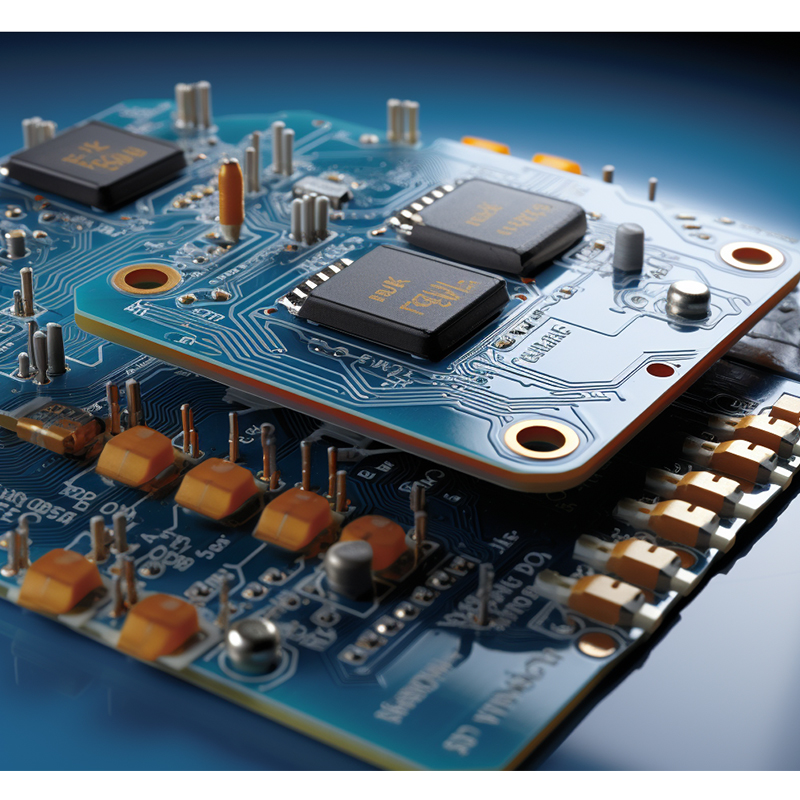In this blog post, we’ll explore effective techniques and best practices for optimizing the design of rigid-flex circuit boards to achieve impeccable signal integrity.
Introduction :
Signal integrity plays a critical role in the successful operation of electronic devices, especially in the field of complex rigid-flex circuit boards. These boards combine the advantages of rigid and flexible substrates, creating unique design challenges. To ensure optimal signal transmission and mitigate potential issues such as electromagnetic interference (EMI) and crosstalk, a well-optimized design strategy is critical.
Understanding Signal Integrity :
Signal integrity refers to the fidelity of electrical signals as they propagate through a circuit. For reliable, error-free transmission of digital or analog data, maintaining signal integrity is crucial. In rigid-flex circuit boards, the combination of rigid and flexible materials increases the complexity of signal integrity issues.
To optimize signal integrity, designers must consider the following key factors:
1. Impedance control: By matching the impedance of traces and transmission lines to the impedance of the components they connect to, signal reflections and distortion can be minimized. Techniques such as controlled impedance routing and the use of impedance calculators can help achieve optimal signal integrity.
2. Crosstalk mitigation: Crosstalk occurs when the electromagnetic field of one trace interferes with adjacent traces, causing signal damage. Careful spacing, shielding, and proper routing techniques can be used to reduce crosstalk and ensure signal integrity.
3. EMI shielding: Rigid-flex circuit boards are susceptible to electromagnetic interference (EMI) due to their flexible parts. Proper grounding, shielding, and careful component placement help prevent unwanted signals and improve signal quality.
Optimizing rigid-flex circuit board design for signal integrity :
1. Layer stacking: The selection and arrangement of layers in a rigid-flex circuit board greatly affects signal integrity. Strategically placed power and ground planes help reduce noise and improve signal performance. Partitioning the board into separate areas for analog, digital, and high-frequency components also helps minimize cross-talk.
2. Traceroute: Effective routing techniques play a key role in maintaining signal integrity. Key practices include avoiding sharp angles, minimizing trace lengths, utilizing differential pair routing for high-speed signals, and keeping high-frequency traces short and straight.
3. Bends and Bend Areas: Designing bend areas with appropriate bend radii is critical to preventing signal integrity issues. Excessive bends or sharp bends can cause impedance mismatch, signal loss and premature failure. Following the manufacturer’s flex area design guidelines ensures the required reliability and signal integrity.
4. Grounding and Shielding: Good grounding techniques are critical to maintaining signal integrity. A low-impedance ground plane provides a reliable reference point for signals, reducing noise and improving signal quality. Shielding sensitive traces, such as high-speed data lines, with ground planes or signal strippers can help reduce EMI risks.
5. Thermal Management: Proper thermal management is critical for rigid-flex circuit boards. Excessive heat can negatively impact signal integrity and the overall reliability of the board. Using heat sinks, cooling vents, and optimizing component placement to promote efficient airflow can help avoid excessive temperatures.
6. Signal integrity simulation and analysis: Using advanced simulation tools, designers can identify and correct signal integrity issues early in the design process. Tools such as electromagnetic field solvers, transmission line simulators, and signal integrity analyzers can help pinpoint potential problems and generate optimized solutions.
Conclusion :
Achieving excellent signal integrity in the design of rigid-flex circuit boards requires an optimization approach that takes into account impedance control, crosstalk, EMI shielding, and various other design factors. By carefully implementing the above techniques and focusing on best practices, designers can ensure reliable signal transmission, reduce noise, and enhance performance. Staying abreast of the latest advances in signal integrity simulation tools and industry trends is also critical to continued improvement in the field. Mastering the optimization of signal integrity on rigid-flex circuit boards will undoubtedly enable seamless integration into various electronic applications.
Post time: Oct-09-2023
Back







